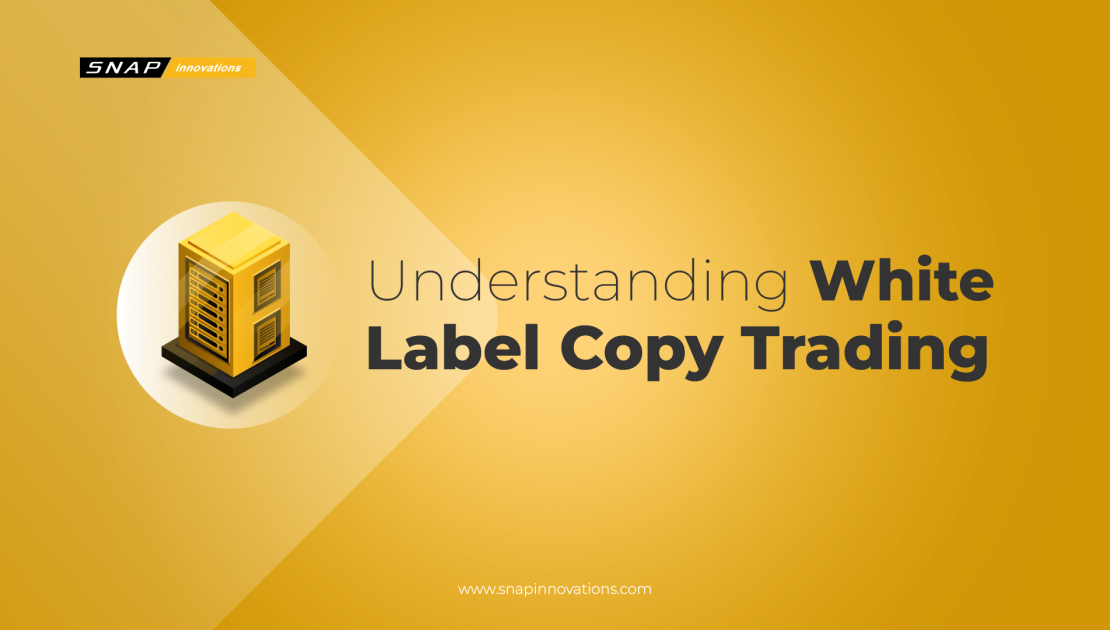White label copy trading is a business model in which a company (the white label provider) offers its software and technology to other companies (the white label partners) to allow them to launch their own copy trading platforms. This means that the white label partners can rebrand the software and technology as their own, and they can also set their own fees and commissions.
There are a number of benefits to using white label copy trading software. First, it can save businesses a lot of time and money. They don’t need to develop their own software from scratch, and they don’t need to hire a team of developers to maintain it. Second, white label copy trading software is typically more reliable and secure than in-house solutions. The white label provider has already invested in testing and security, so businesses can be confident that their platform is safe to use. Third, white label copy trading software can give businesses a competitive edge. By offering a white label solution, businesses can reach a wider audience and attract more clients.
Understanding White Label Copy Trading
White label copy trading is a service provided by financial institutions, brokerage firms, and other intermediaries, allowing them to offer their clients access to a pre-existing copy trading platform under their own branding. Instead of developing an entirely new copy trading platform from scratch, these companies opt for a white-label solution, rebranding and customizing it to suit their specific needs and preferences.
This approach offers a range of advantages, enabling financial institutions to provide a robust copy trading experience without the resource-intensive process of building a platform from the ground up. White label copy trading is also a financial technology service that enables brokers to offer their clients the ability to automatically replicate the trades of experienced signal providers. This can be a win-win scenario, as traders gain access to professional trading strategies, while brokers can attract and retain clients through this value-added service. However, it’s crucial for all parties involved to consider the risks, regulatory requirements, and technology infrastructure necessary to operate a successful white label copy trading platform.
How Does White Label Copy Trading Work?
 1. Platform Selection
1. Platform Selection
The process begins with the financial institution or broker selecting a white label copy trading platform from an existing provider. The choice of platform is critical and is typically based on several key factors:
Features and Functionality: The platform’s features must align with the institution’s goals and client requirements. It should offer tools for signal providers to share their trading strategies and for followers to choose and replicate those strategies seamlessly.
Customization: The chosen platform should be highly customizable to allow the institution to brand it according to their identity. This often includes incorporating their logo, color scheme, and design elements.
Regulatory Compliance: Compliance with financial regulations is essential. The platform provider must possess the necessary licenses and certifications to operate legally within the financial markets.
Technical Support: The provider’s technical support capabilities should be robust, as this is crucial for resolving issues, addressing inquiries, and ensuring a smooth user experience.
Read Next: Institutional Trading Solution : The Ultimate Comprehensive Guide
2. Integration
Once the platform is selected, it undergoes a process of integration into the institution’s existing infrastructure. This involves connecting the white label copy trading platform to the institution’s trading systems, databases, and client management tools. Integration ensures seamless communication between various components and ensures that the platform can operate effectively within the institution’s ecosystem.
3. Branding and Customization
Customization is a key advantage of white label solutions. The platform is rebranded and customized to reflect the institution’s identity and user experience. This includes:
- Incorporating the institution’s logo, name, and color scheme into the platform’s design.
- Tailoring the user interface to match the institution’s branding guidelines.
- Ensuring a cohesive look and feel across the platform to maintain consistency with the institution’s other services.
4. Client Access
After integration and customization, the institution’s clients gain access to the white label copy trading platform. This access is typically provided through their existing accounts with the institution, making it easy for them to explore the platform and its features.
5. Signal Provider Selection
Clients can browse a list of available signal providers or trading experts within the white label copy trading platform. Signal providers are experienced traders who offer their trading strategies for replication by followers. Clients can assess the performance, risk profile, and trading history of signal providers to make informed decisions.
6. Automatic Replication
Once a client chooses a signal provider to follow, the white label copy trading platform automatically replicates the provider’s trades in real-time. This replication includes the buying and selling of assets, adjusting positions, and implementing risk management strategies. This automation allows followers to mirror the trading actions of the chosen signal provider without manual intervention.
7. Monitoring and Control
Clients can monitor the performance of their investments in real-time through the platform. They have the flexibility to make adjustments, pause copying a signal provider, or allocate different amounts of capital to various signal providers based on their preferences and risk tolerance.
The Significance of White Label Copy Trading
 White label copy trading holds significant importance in the financial industry for several reasons:
White label copy trading holds significant importance in the financial industry for several reasons:
1. Accessibility and Democratization of Trading
White label copy trading has democratized access to the financial markets. It allows individuals with varying levels of expertise to participate in trading, even if they lack the time or knowledge required for active trading. This level playing field empowers a broader demographic of investors, fostering financial inclusivity.
2. Diversification of Investment Strategies
White label copy trading platforms often offer access to a wide range of asset classes, including stocks, forex, cryptocurrencies, and commodities. This diversification allows clients to create portfolios tailored to their risk preferences and investment goals, reducing their reliance on a single asset class.
3. Risk Management
Risk management is a fundamental aspect of trading. White label copy trading platforms typically incorporate risk management tools such as stop-loss orders, position sizing options, and risk mitigation strategies. These features help clients control their exposure and minimize potential losses.
4. Transparency and Trust
Transparency is a hallmark of white label copy trading platforms. Clients can assess the track record and performance of different signal providers before choosing whom to follow. This transparency builds trust between investors and providers, fostering a more reliable trading environment.
Read Next: 5 Best Crypto Futures Trading Platforms in 2023
5. Competitive Advantage
For financial institutions, white label copy trading offers a competitive advantage. It allows them to diversify their product offerings and remain relevant in a rapidly evolving market. By offering innovative services like white label copy trading, institutions can attract and retain clients more effectively.
6. Educational Opportunities
White label copy trading can also serve as an educational tool. Clients have the opportunity to learn from professional traders by observing their strategies and decisions. This learning experience can help clients become more informed investors over time.
How to Choose the Right White Label Copy Trading Solution
 Choosing the right white label copy trading solution is a strategic decision that can enhance your business and provide significant value to your clients. By aligning the platform with your business goals, assessing customization options, evaluating asset support, analyzing user experience, ensuring performance and reliability, emphasizing risk management, verifying integration and compliance, prioritizing support and training, and considering pricing and scalability, you can make an informed choice. Remember that the ideal white label copy trading solution should not only meet your immediate needs but also be flexible and adaptable to future growth and evolving market dynamics.
Choosing the right white label copy trading solution is a strategic decision that can enhance your business and provide significant value to your clients. By aligning the platform with your business goals, assessing customization options, evaluating asset support, analyzing user experience, ensuring performance and reliability, emphasizing risk management, verifying integration and compliance, prioritizing support and training, and considering pricing and scalability, you can make an informed choice. Remember that the ideal white label copy trading solution should not only meet your immediate needs but also be flexible and adaptable to future growth and evolving market dynamics.
Conclusion
White label copy trading represents a significant advancement in the financial industry, enabling institutions to offer a powerful and customizable copy trading solution to their clients. It enhances accessibility to professional trading strategies while streamlining the process for financial intermediaries. As technology continues to advance, white label copy trading is poised to play a pivotal role in expanding investment opportunities and providing a seamless experience for both traders and investors.

